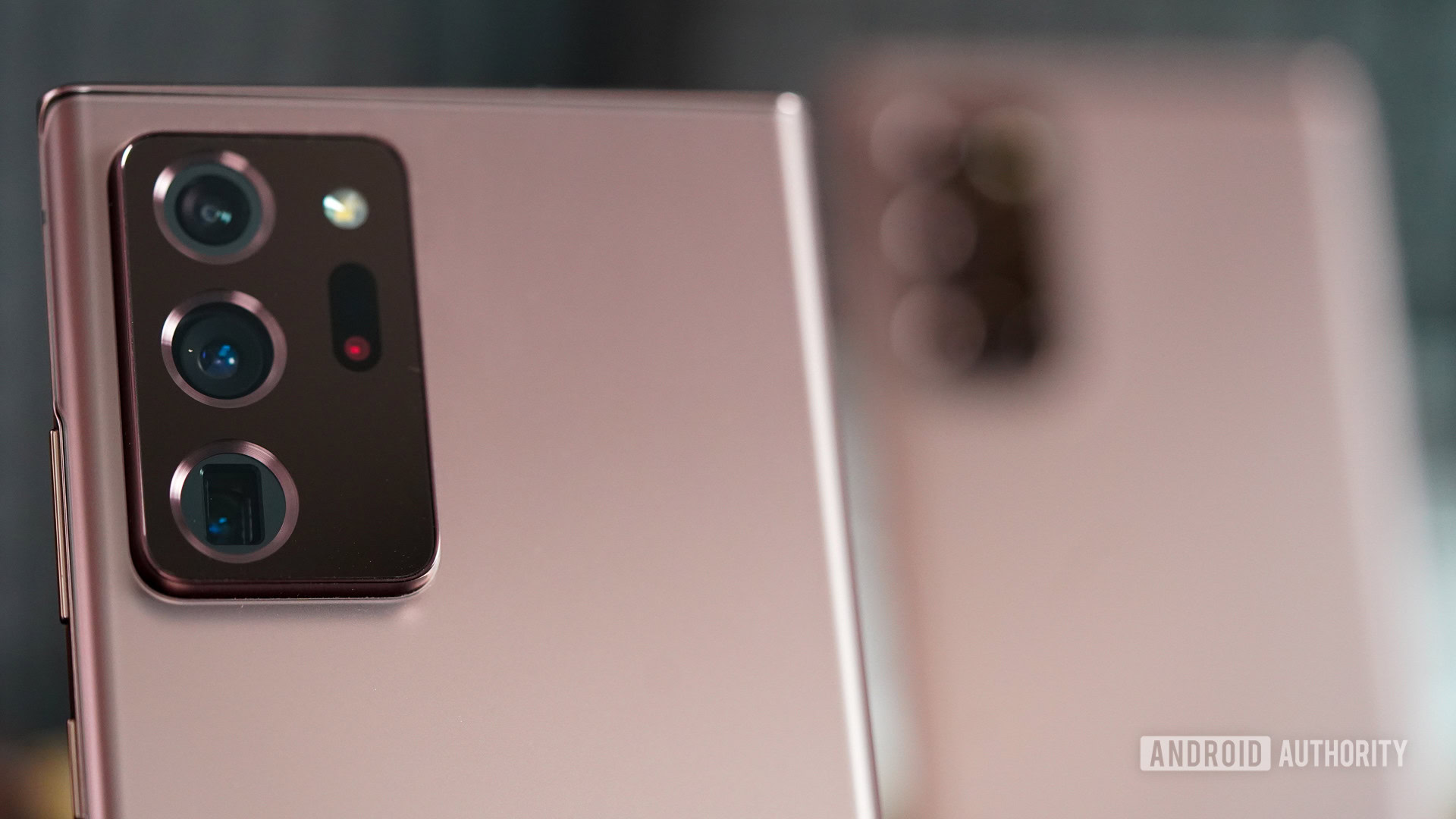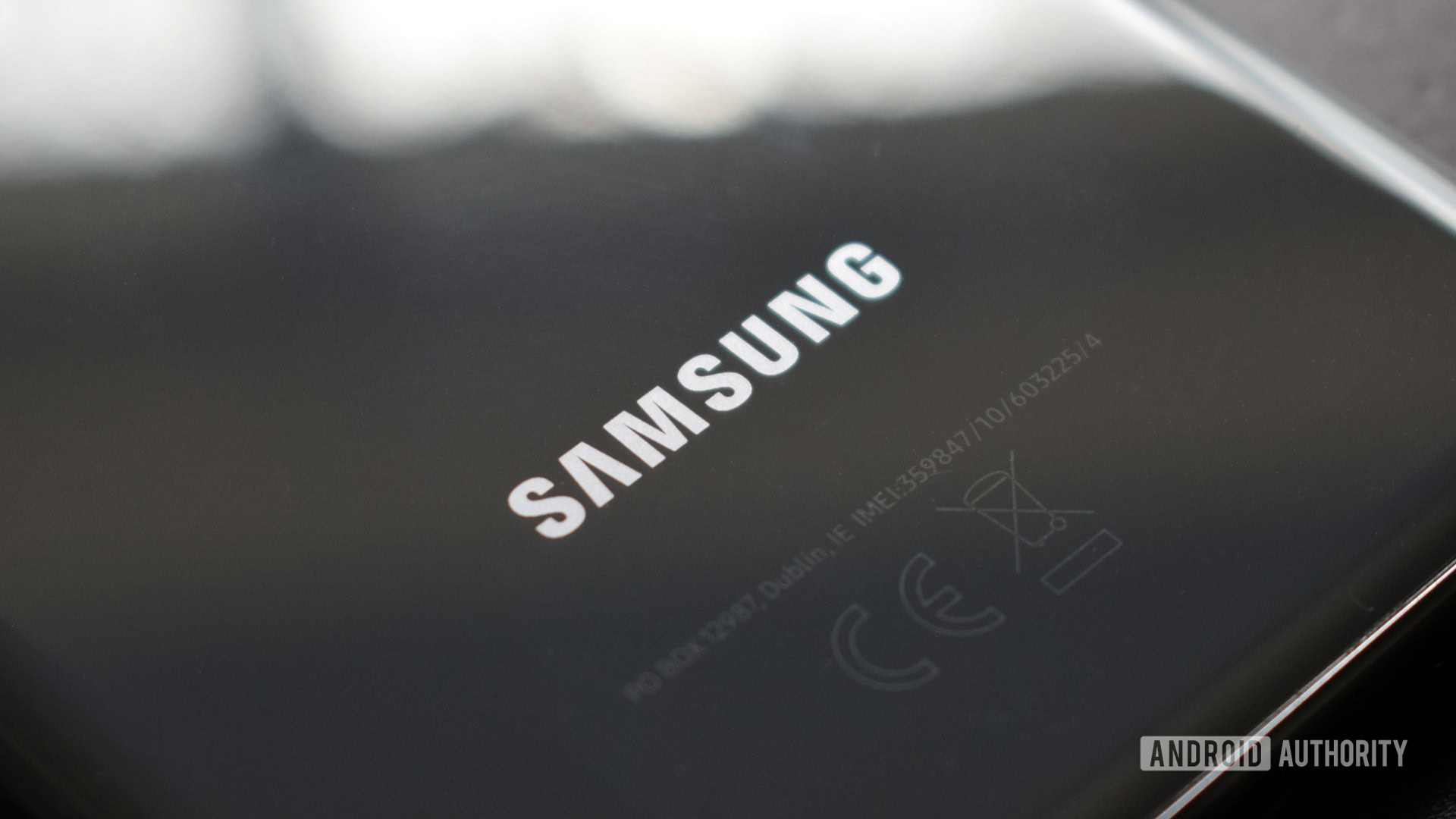Affiliate links on Android Authority may earn us a commission. Learn more.
The underpowered Galaxy Note 20 Exynos model risks splitting the series in two
August 9, 2020

As with any new premium Samsung phone, the arrival of the Galaxy Note 20 and Note 20 Ultra inevitably leads to talk about the US vs global variants, as well as their differences. Of course, the most controversial difference is the Snapdragon vs Exynos debate, or to be more specific in this case: the capabilities of the Snapdragon 865 Plus versus the Exynos 990. Samsung likes to avoid comparisons between its handset variants, and increasingly with good reason.
The debate has been raging for generations of Galaxy models, but came to a head in early 2020 when benchmarks for the Exynos 990 versus Snapdragon 865 appeared. I won’t rehash that here, but the bottom line is that the Exynos 990 was not only slower, particularly for gaming, but also turned out to be less energy efficient in CPU-demanding scenarios.
Unfortunately, for buyers in the West — outside the US — the introduction of the even more powerful 865 Plus widens the gap between Samsung’s two regional configurations even further.
The upgraded Plus model provides around a 7% boost over the 865 in our testing of the ASUS ROG Phone 3. Meanwhile, the Exynos model remains unchanged, leaving the global Galaxy Note 20 in the same underwhelming bracket as the Galaxy S20. That’s not a great selling point for what’s supposed to be Samsung’s ultimate mobile workhorse.
Is a Samsung Galaxy really a Galaxy if the global version performs significantly worse?
This isn’t just the musings of an SoC enthusiast, either. Our readers have been quite divided on the issue too. Approximately two-thirds of poll respondents noted that the inclusion of the Exynos 990 would or might negatively influence their Note 20 purchasing decision.
Normally at Android Authority, we wouldn’t knock a phone for providing adequate performance. After all, we’re quite big fans of many of today’s more affordable handsets. Plus, the Exynos 990 isn’t slow in real terms, only by comparison. However, I think there’s an exception to be made when the phone is marketed as the best the company can offer, and the same premium prices are charged for two increasingly different products.
We’ll fully test the two Galaxy Note 20 devices once we have both models in house in order to get a more definitive performance difference between the two. However, it’s clear from the outset that the Snapdragon Note 20 and Exynos Note 20 don’t offer consumers the same experience in terms of performance or battery life. This gives Samsung customers and fans legitimate cause for complaint. Just how did Samsung end up falling behind with the Exynos program?
Samsung misjudged the modern mobile SoC
One of the biggest problems with the Exynos 990 is its powerful, power-hungry, and frankly not that well-balanced Mongoose M5 core. Samsung actually has an M6 CPU design kicking around, but the design team has since disbanded and so we may never see it. Which might be for the best.
Core design criticisms aside, tunnel vision in the pursuit of Apple-tier performance appears to have taken hold over the past few years. This seems to have caused Samsung to neglect the increasingly important role of heterogeneous computing in the mobile SoC arms race. While high performance is a bonus, flagship SoCs have shifted to efficient processing for a diverse range of workloads.
Unfortunately, Samsung can’t really help the sluggish performance of its Mali GPU. At least not without spending significantly more money in the silicon area. The company’s graphics deal with AMD may come to fruition in 2021, potentially providing the company with a more competitive high-end solution. We’ll just have to wait and see.
Samsung's pursuit of increasingly insignificant CPU performance puts it behind in the AI and camera arms race.
On paper, the Exynos 990 actually ticks a few boxes. It has a dual NPU for AI processing, 8K video recording, as well as x265 and VP9 encoding. However, this isn’t quite the complete package that it first appears to be. For starters, unlike Qualcomm and HUAWEI, Samsung’s NPU isn’t exposed to the Neural Networking APIs that third-parties need to leverage the hardware, according to benchmarks courtesy of Anandtech. So, only Samsung’s apps can use this extra hardware, which can’t be said about the Snapdragon variant.
We also don’t hear about any major image processing (ISP) advancements from Samsung, a key component for premium-tier camera phones. HUAWEI’s Kirin 990 ISP boasts BM3D noise reduction hardware, while Qualcomm’s Snapdragon 865 has built computer-vision optimizations directly into its ISP for the first time. Even Google designed its own Visual Core to improve AI and image processing. We simply don’t hear about such enhancements from Samsung’s design team, suggesting they aren’t making the same strides in inefficient computing.
See also: AMD hints at how RDNA could beat Qualcomm’s Adreno GPU
Samsung is reluctant to talk about the finer ins-and-outs of the Exynos 990 for now — no doubt due to the inevitable Snapdragon comparisons. So, we can’t be certain about the competitiveness of all its capabilities. The outsider’s picture is that Samsung has focused its in-house operations on the increasingly insignificant CPU performance angle, possibly at the expense of the increasingly important AI and ISP arms race.
Why does Samsung keep using Exynos?

It’s quite clear by now that Exynos is increasingly inferior to Snapdragon chips, albeit not by a massive margin in day-to-day use. So, why does Samsung continue to offer it instead of mass-adopting the Snapdragon SoC?
Of course, I can only speculate, but the most likely reason is that Samsung — blindly? — believes in its own product. It has invested heavily in in-house development and doesn’t want to throw all that work away when it’s losing by only reasonably small margins. Profit margins are probably an even bigger influence. The Qualcomm Snapdragon 865 and its associated 5G components aren’t cheap.
Meanwhile, Samsung has a workable in-house SoC that it can produce at very competitive margins using its own manufacturing plants. Samsung Semiconductor would also take a financial hammering if every Galaxy S and Note handset switched to TSMC-produced Snapdragons.
In the end, Samsung needs Exynos as a buffer against its rivals TSMC and Qualcomm. Something the industry certainly needs too. However, consumers are left with tough choices to make when Samsung falls behind. Fortunately, it looks like some major changes are on the horizon.
A new-look Exynos is on the horizon
Since Samsung’s CPU design team disbanded in October 2020, the Exynos 990 is likely the last SoC to feature its custom Mongoose CPU cores. This is probably the right call given that off-the-shelf ARM CPUs are already very good. Now, we also know that a powerhouse Arm Cortex-X1 is on the way for 2021, which could give Samsung the peak performance it has been after, without the in-house headaches.
Combined with a — hopefully — more powerful GPU based on AMD’s RDNA architecture, Samsung’s future Exynos designs could double down on AI, ISP, 5G, and other silicon aspects that are increasingly important. The result should be competitive chips with fewer obvious complaints. At least in theory.
Falling any further behind could increase pressure to split the Galaxy product line.
If that doesn’t pan out and future Exynos chipsets continue to fall behind in terms of performance and energy efficiency, customer complaints will only escalate. The pressure to finally split the branding of its Exynos and Snapdragon variants could reach a breaking point, leading to some very tough choices for Samsung’s marketing and product departments.
Hopefully, Samsung’s upcoming change in direction will allow it to avoid this scenario. Time will tell if Exynos and the Samsung Galaxy line can recover from their latest scrap with Snapdragon. In the meantime, global Samsung Galaxy buyers will have to endure at least one more dubious Exynos generation with the Note 20 series.